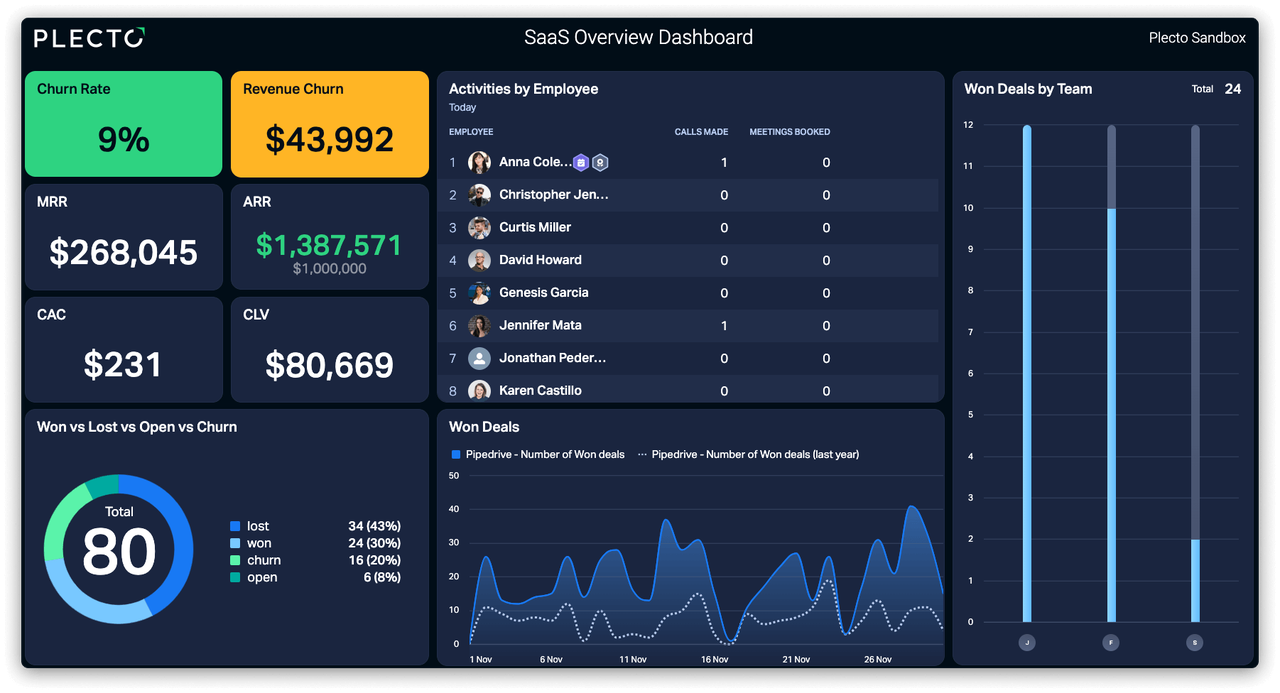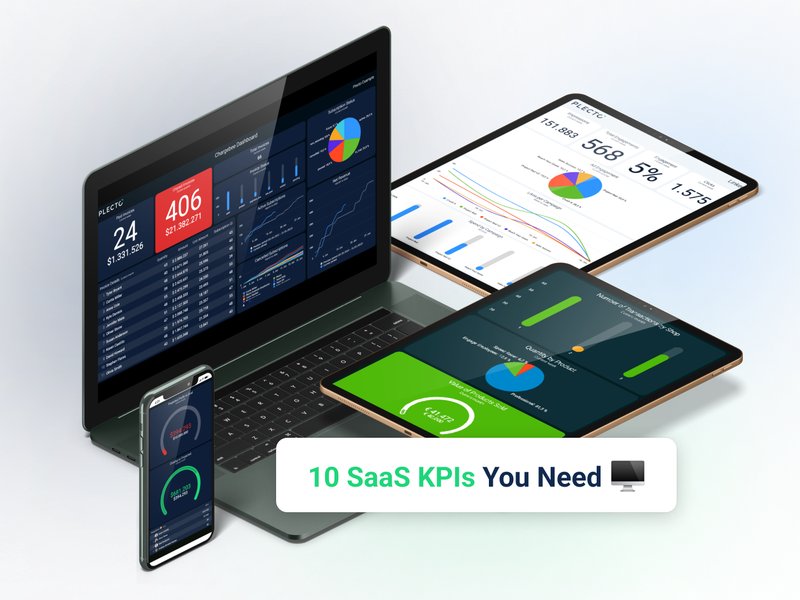The pandemic disrupted how companies approach virtually every aspect of their operations, and sales departments saw some of the most dramatic changes. While the world may have mostly returned to a semblance of normal, remote selling is here to stay!
As sales reps navigate this new normal, many still have questions about remote sales strategy. Read on to find out:
- Why remote selling is here to stay
- The benefits of remote selling
- 5 key challenges of remote selling
- 5 remote sales strategy best practices
- 3 best practices for managers of remote sales teams
Why Remote Selling Is Here to Stay
One of the most lasting business effects of Covid-19 appears to be a shift of power, giving consumers unprecedented control over how they buy products and services – and what happens after they’ve made their choice. While this article explores how the pandemic changed customer service forever, many sales teams have experienced a similar disruption and are realizing that while remote selling first emerged as a crisis response, remote sales are here to stay.
Consumers have spoken, and the future of sales is buyer-centric and mostly online. 50% of consumers say that working remotely has made the purchasing process easier. The pandemic-fueled spike in the popularity of self-service SaaS products supports this point and also indicates that a traditional sales process won’t work in the future.
By 2025, an estimated 80% of B2B sales interactions will take place via digital channels, with a preference for video calls and online chat. People have gotten used to working from home, and the rapid development of online meeting tools in response to pandemic-era business needs, along with employee demands to keep these flexible working models, have spurred many employers to permanently adopt remote and hybrid work policies. With more people working from home more often, online sales meetings are the logical, and perhaps only, choice.
According to McKinsey, more than 75% of buyers prefer digital self-service and remote interactions over face-to-face options – and only about 25% would like to return to in-person sales processes. Research also shows that most buyers are comfortable making high-value purchases remotely. If we’re to believe these stats, sales departments must embrace this new normal, or be left in the dust.

Benefits of Remote Selling
While customers prefer the speed and convenience of getting information, placing orders, and arranging services online, remote selling also has some benefits for sales reps and their employers – namely, cost-savings and increased reach and efficiency.
The days of expense reports filled with travel-related expenses are over! With online sales meetings, companies can save big on travel expenses. This decimation of sales-related travel expenses has leveled the playing field because small companies with tight budgets and not a lot of free capital to spend on travel can now compete with bigger companies online. This could enable formerly regional players to scale up and sell nationally or even globally. Removing travel from the equation also allows more scheduling flexibility, so reps can have more meetings in less time – and reschedule with ease if a prospect cancels.
With remote selling, reps can use the time they used to spend traveling to sales meetings on prospecting and other funnel-filling activities. In addition, virtual meetings tend to be shorter than in-person meetings, leaving more time for following up on leads and nurturing high-value prospects.
5 Key Challenges of Remote Selling
Despite its many advantages, remote selling isn’t without its challenges. Here are five of the biggest challenges faced by remote sales teams and their managers
1. Lack of engagement
The biggest stumbling block for reps working in remote sales is that it’s more difficult to engage prospects and build rapport when selling remotely. To complicate matters even more, prospects are likely to be multi-tasking during sales meetings (i.e., texting, checking emails) – or even zoning out, possibly missing crucial points of the pitch. Providing the right information at the right time has always been a key to success in sales, but it’s even more crucial in remote selling where prospects are even more difficult to hook and convert. While this article was originally written with customer service reps in mind, some of these tips for building customer rapport can also be helpful to sales reps in remote selling.
2. Lack of visual cues, and difficulty identifying each customer’s needs
Virtual meetings, particularly those where most of the attendees have their webcams turned off, make it difficult to pick up on subtle body language cues that indicate the prospect is engaged and the pitch is resonating – or that you’re losing them and sailing into “lost deal” territory.
Personalized pitches that address each customer’s needs and pain points are one of the cornerstones of customer-centric selling and recent sales trends. Unfortunately, the lack of visual cues combined with the anonymity of online sales and remote interactions makes it difficult to “read the room” and get to the nitty gritty of what each customer needs, making it difficult to tailor the pitch.
Build your first dashboard.
Start your 14-day free trial today
3. Waning motivation among low performers
Low-performers working remotely often struggle to stay on track without a boss to guide them. This puts extra pressure on sales managers who need to invest extra time and effort into making sure that all reps are working at full capacity and delivering results that are at least on par with what they’d accomplish working onsite. In such situations, automatic time tracking software can provide valuable assistance for managers. These tools offer real-time insights into their team's activities, allowing managers to keep an eye on employees’ progress, identify any productivity issues, and offer guidance when needed. In such situations, automatic time tracking software can provide valuable assistance for managers. These tools offer real-time insights into their team's activities, allowing managers to keep an eye on employees’ progress, identify any productivity issues, and offer guidance when needed.
4. Identifying and providing the right tech stack
Just as a CRM is crucial to sales operations, the right digital tools are essential to remote selling. Insufficient tech resources can make a company seem unprofessional and sink even the best pitch.
At a minimum, a solid tech stack for remote selling includes a CRM, time-tracking app, reliable videoconferencing software (e.g., Zoom, Microsoft Teams), a team collaboration tool (e.g., Slack), and a resource-sharing tool (e.g., Sharepoint, Google Drive). In addition, each rep should have a reliable internet connection with adequate bandwidth and a dependable PC or laptop with sufficient technical specifications.
5. Training difficulties
Ongoing coaching and training are key to developing talent and growing sales year over year. Just as prospects are likely to be multi-tasking during remote sales meetings, reps are likely to be multi-tasking to tuning out during virtual training sessions, leading to poor ROI and skill stagnation.

5 Remote Sales Strategy Best Practices
While many of the traditional sales tactics are still valid in remote selling, remote sales strategy can also be a bit of a horse of a different color. Here are five sales strategy best practices to keep in mind as you chart these unfamiliar waters.
1. Adopt the 9-minute multi-media pitch
Knowing that prospects are likely multi-tasking during remote sales meetings, sales reps need all of the tips and tricks they can get. According to neuroscientists, the average human attention span is 10 minutes. However, they say that introducing a change (e.g., video, story, demo) can reset this 10-minute attention span and reengage an audience. Armed with this information, reps can hack their prospects’ attention spans by limiting their pitches to nine minutes and resetting the prospects’ attention spans using multiple communication tactics, like storytelling, short videos, and multiple speakers.
2. Use storytelling in your pitch
We touched on this in best practice #1, but it deserves to be singled out. Without the ability to build an in-person rapport with prospects, it’s even more crucial to find ways to stand out. With more and more self-service tools and product information available online, prospects are coming to sales meetings more informed than ever. It’s likely that they’re already up to speed on your product’s features and specs, so don’t waste time telling them what they already know. Tell a story that’s going to spark an “aha” moment and make the prospect remember your solution as the one that can solve whatever issue made them go looking for your product in the first place. Success stories work especially well here, just make sure to pick one that the prospect can relate to.
3. Talk less, listen more
While it’s undoubtedly more difficult to build rapport in virtual meetings vs. face-to-face meetings, there’s one simple tactic that can help – talk less and listen more. Research shows that the most successful sales reps listen more than they talk, and this is also true in virtual meetings. It can be a slim margin of just 10%, but to have the best chance of closing the deal, prospects should have the most airtime.
4. Practice active listening
Just as it’s difficult for remote sales reps to read prospects’ body language, the reverse is also true. Therefore, active listening is an important remote sales strategy tactic that can help a sales rep stand out from the crowd. Practicing active listening can also help improve focus and make it less likely that the rep will miss a crucial clue that could help them close the deal, while at the same time it improves the chances that they’ll uncover information that can help their pitch. When reps ask follow-up questions and use remote sales strategy tactics like paraphrasing what the prospect has just told them, prospects feel heard and understood. This can help to build rapport while improving the rep’s understanding of the prospect’s needs and reducing the risk of misunderstandings.
5. Always use your webcam
Regardless of whether the prospect turns on their webcam, sales reps should have theirs turned on 100% of the time during sales calls. Letting prospects see who they’re talking to can help build trust and rapport, especially by placing the webcam at eye-level and looking directly into it to make virtual eye contact. In addition, it’s not a bad idea to record remote sales meetings – with the prospect’s permission of course. Just like “game tapes” in sports, these recordings can help reps or even teams improve their pitches by watching and analyzing how prospects react to different parts of the pitch to understand what works and what doesn’t.

3 Best Practices for Managers of Remote Sales Teams
Strong and effective leadership is key to any successful team. Here are three best practices to help managers get the best performance out of their remote sales teams.
1. Keep up with coaching
Just because your reps are working remotely doesn’t mean that they don’t need coaching. In fact, they might need it now more than ever! According to recent research, sales reps who receive regular coaching regularly exceed their quotas, boost sales revenue, and demonstrate improved close rates over time. Check out this article to learn why coaching with real-time sales data matters, and get your coaching program back on track if you’ve been lax about it.
2. Use dashboards to visualize performance
Visualizing sales performance can be a strong motivator and unifying force for teams sitting in different locations. In addition, tracking sales KPIs in one place can help sales managers keep a solid overview of how individual reps and the team overall are performing. To make sure that you’re tracking the right sales KPIs – the ones that drive tangible results for the company, check out these 21 sales KPIs you should be tracking, these 10 outbound sales KPIs to track, and these 10 inbound sales KPIs your team really needs. If you’re new to using dashboards, these 5 dashboards that every sales team needs are a great place to start!
3. Celebrate success
Building camaraderie and cultivating the high-energy vibe that can kick motivation into high gear is especially challenging for managers of remote teams. With reps dispersed across separate locations, building team spirit becomes even more important, and one of the best ways to do this is by celebrating success often and enthusiastically.
A recent survey into workplace gamification showed that gamification bolsters employees’ sense of belonging while improving job satisfaction and employee performance – all crucial ingredients to a successful remote sales strategy. Instant notifications and gamification elements trigger the release of serotonin while tools like leaderboards can further increase motivation, promote friendly competition, and create a sense of team spirit.
Use Plecto to Drive Remote Sales
Plecto is full of features and functionality to keep remote sales teams on track for success!
Plecto supports the best practices covered in this article by providing real-time sales performance dashboards to track KPIs and help with coaching – and built-in gamification features like leaderboards, contests, points, badges, and instant notifications to help everyone celebrate success, regardless of where they’re sitting.
Sign up for a free 14-day trial and see firsthand how Plecto can help improve your remote sales operations!




